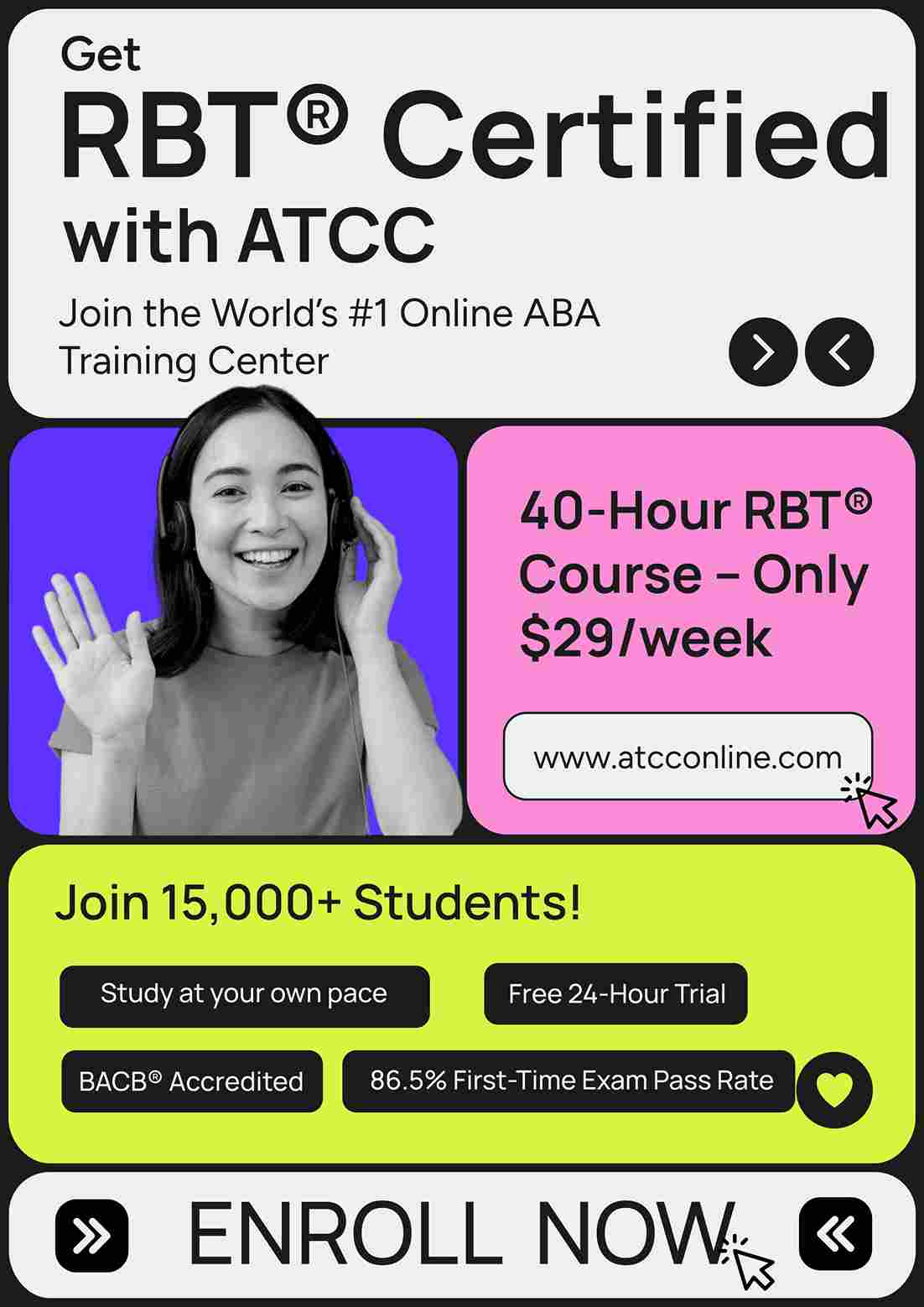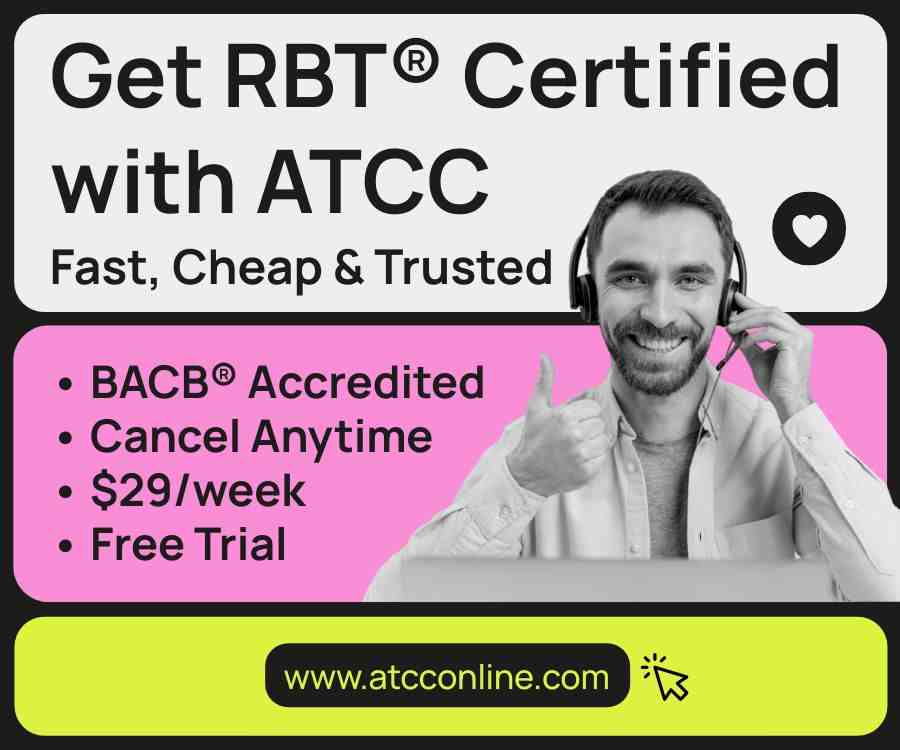As an educator, I often see the profound impact that dedicated support professionals have on individual learning and development. Within the sphere of Applied Behavior Analysis (ABA), the Registered Behavior Technician, or RBT, stands out as a crucial figure. So, what exactly is a Registered Behavior Technician, and why is this role increasingly significant, particularly in supporting individuals with autism spectrum disorder (ASD) and other developmental needs?

An RBT is a certified paraprofessional credentialed by the Behavior Analyst Certification Board (BACB). Think of them as the skilled practitioners who work directly with individuals, implementing behavior-analytic services under the close guidance and supervision of a Board Certified Behavior Analyst (BCBA) or a Board Certified Assistant Behavior Analyst (BCaBA). They are indispensable members of the care team.
What Does an RBT Actually Do? Exploring Roles and Responsibilities
You might be wondering, what does the day-to-day work of an RBT involve? Primarily, RBTs are the hands-on implementers of treatment plans meticulously designed by their supervisors. Their core responsibilities often include:
- Executing Intervention Plans: Diligently following individualized plans aimed at teaching new skills (like communication, social interaction, or daily living activities) and reducing behaviors that may be challenging or harmful.
- Collecting Data: Carefully observing and recording data on client progress and behavior. This information is crucial for the supervising BCBA to monitor the effectiveness of the plan and make necessary adjustments. Accuracy here is paramount.
- Direct Client Interaction: Working one-on-one or in small groups with clients in various settings – perhaps in a clinic, a school, the client’s home, or out in the community. This helps individuals learn and generalize skills across different environments.
- Utilizing ABA Techniques: Employing specific strategies, such as positive reinforcement, prompting, and other evidence-based methods outlined in the treatment plan.
- Communicating and Collaborating: Regularly communicating observations, progress, and any concerns to their supervisor, ensuring a cohesive team approach.
It’s important to understand a key distinction: RBTs implement the plan; they do not design the assessment or intervention strategies independently. That responsibility lies with the BCBA. Does this clarify the RBT’s specific function within the therapeutic process?

How Does an RBT Fit into the Broader Behavioral Therapy Team?
Behavior analysis, much like education, operates with different levels of expertise and responsibility. It helps to visualize a tiered structure:
- BCBA (Board Certified Behavior Analyst): Holds a Master’s degree, possesses extensive training, designs treatment plans, conducts assessments, and provides supervision.
- BCaBA (Board Certified Assistant Behavior Analyst): Holds a Bachelor’s degree, works under BCBA supervision, can implement plans, and may supervise RBTs.
- RBT (Registered Behavior Technician): Holds at least a high school diploma, completes specific training and assessments, and implements plans under the required, ongoing supervision of a BCBA or BCaBA.
This structure ensures quality control and provides RBTs with consistent support and guidance. The BACB mandates that RBTs receive supervision for at least 5% of the hours they spend providing services each month. Why is this supervision so crucial? It ensures treatment fidelity, ethical practice, and continuous professional development for the RBT.
The Pathway: Steps to Achieving RBT Certification
Perhaps you’re thinking, “This sounds like meaningful work. How does one become an RBT?” The pathway established by the BACB is designed to be accessible while ensuring foundational competence. Here are the key steps:
- Eligibility: You must be at least 18 years old and possess a high school diploma or its equivalent. A background check is also typically required, often mandated by employers or state regulations.
- 40-Hour Training: You need to complete a specific 40-hour training program based on the RBT Task List (2nd ed.). This training must meet BACB standards and be completed within a 180-day period, but not in less than 5 days. Many organizations offer this training, sometimes online, with costs generally ranging from about $100 to $300, though some employers might provide it.
- Competency Assessment: After the training, a qualified BCBA or BCaBA must conduct an Initial Competency Assessment. This involves directly observing you perform specific tasks or using role-playing scenarios to ensure you can apply the learned concepts effectively.
- Certification Exam: Finally, you must pass the RBT certification exam administered through Pearson VUE. It’s a multiple-choice test designed to assess your knowledge of the RBT Task List.
Does this roadmap seem achievable? It’s intentionally structured to be an entry point into the field without requiring a college degree initially, allowing individuals to gain valuable experience.

Maintaining Your Credentials: Renewal and Ongoing Obligations
Achieving RBT certification isn’t the end of the journey; it requires ongoing commitment. RBTs must:
- Renew Annually: Certification must be renewed each year.
- Receive Ongoing Supervision: Maintain that crucial link with a qualified supervisor who oversees their work.
- Complete an Annual Competency Assessment: Similar to the initial assessment, this ensures skills remain sharp.
- Adhere to Ethical Standards: Uphold the RBT Ethics Code (currently version 2.0), which outlines professional conduct and responsibilities.
- Pay Renewal Fees: There is an annual fee (around $35) associated with maintaining the certification.
Why is continuous adherence to ethics so important in this field? It safeguards clients, maintains public trust, and ensures the integrity of the profession.

The Work Itself: Environment, Salary, and Career Prospects
What is it truly like to work as an RBT?
- Work Settings: RBTs enjoy diverse environments – clinics, schools, homes, community centers. Some roles may involve travel between locations.
- Schedules: Flexibility is often a feature, with full-time, part-time, and contract positions available. Due to client needs (like after school), evening and weekend hours can be common.
- Salary: As of early 2025, typical hourly wages range from approximately $18 to $25, translating to annual salaries roughly between $35,000 and $50,000. Of course, this varies considerably based on geographic location, experience level, and the specific employer. While rewarding, it’s good to have realistic expectations about entry-level compensation.
- Job Outlook & Growth: The demand for RBTs is strong and growing, largely driven by increased awareness and diagnosis of autism, and the demonstrated effectiveness of ABA. For many, the RBT role serves as a stepping stone. With further education (a Bachelor’s for BCaBA, Master’s for BCBA) and supervised experience, there’s a clear trajectory for career advancement within behavior analysis. Where could this role lead you?

The Heart of the Matter: Essential Skills and Qualities
Success as an RBT hinges on a unique blend of personal attributes and professional skills. Are these qualities you possess or aspire to cultivate?
- Personal Attributes: Patience is paramount, as progress can sometimes be incremental. Empathy allows connection with clients and families during challenging times. Tenacity helps navigate difficult sessions, and meticulous attention to detail is vital for accurate data collection and plan implementation.
- Professional Skills: Strong communication skills are needed for collaborating with supervisors and families. Adaptability is key, as no two days (or clients) are exactly alike. Proficiency in observation and objective data recording is fundamental.
Weighing the Experience: Rewards and Challenges
Like any profession dedicated to human service, being an RBT offers profound rewards alongside significant challenges.
- Challenges: The work can be emotionally and sometimes physically demanding. Managing challenging behaviors requires skill and composure. There’s a potential for burnout if self-care isn’t prioritized. The reliance on supervision, while supportive, can sometimes feel limiting to those seeking more autonomy.
- Rewards: The flip side is incredibly fulfilling. Witnessing a client make tangible progress – learning to communicate, reducing harmful behaviors, engaging more with their world – provides immense job satisfaction. RBTs often report feeling they make a real, meaningful difference in the lives of individuals and their families. What truly motivates individuals in this demanding yet rewarding field? Often, it’s this direct impact.

Ethical Stewardship: A Core Tenet
Ethics form the bedrock of RBT practice. The RBT Ethics Code (2.0) isn’t just a document; it’s a guide for daily conduct. Key principles include maintaining client dignity, ensuring confidentiality, establishing and maintaining professional boundaries, and acting with integrity. Handling ethical dilemmas, such as conflicts of interest or confidentiality breaches, requires careful navigation, usually involving consultation with the supervisor and strict adherence to the code.
Finding Your Way: Resources for Aspiring and Current RBTs
If this exploration has sparked your interest, where can you turn for more information?
- Behavior Analyst Certification Board (BACB) Website (bacb.com): The definitive source for the RBT Handbook, Ethics Code, requirements, and updates.
- Approved Training Providers: The BACB website lists organizations offering the required 40-hour training course.
- Job Boards: Websites like Indeed, Glassdoor, as well as specialized ABA job boards, list RBT openings.
- Professional Communities: Online groups (like on LinkedIn) and forums dedicated to ABA can offer valuable insights and networking opportunities.
In Conclusion: A Meaningful Starting Point
The Registered Behavior Technician role is far more than just a job; it’s an accessible entry point into the dynamic and impactful field of applied behavior analysis. It requires dedication, specific training, adherence to ethical standards, and a genuine desire to support others. While challenging, the opportunity to contribute directly to improving individuals’ quality of life offers profound personal and professional rewards.
Could this be the right path for you? I hope this overview provides a clearer picture of the RBT’s vital contribution and the journey involved in becoming one. Feel free to reflect on whether your skills and aspirations align with this meaningful career.